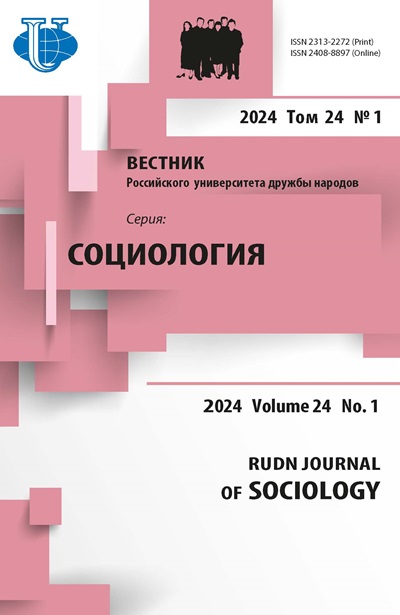Ethnic conflicts in the former Yugoslavia
- Authors: Annikova VA1, Radusinovich M1
-
Affiliations:
- Peoples’ Friendship University of Russia
- Issue: Vol 15, No 4 (2015)
- Pages: 94-102
- Section: Articles
- URL: https://journals.rudn.ru/sociology/article/view/6142
Cite item
Full Text
Abstract
At the end of the XXth century the communist regimes in the Central and Eastern Europe collapsed, as well as the socialist system and the Warsaw Treaty’s Organization. New countries appeared in the international arena: instead of the former Yugoslavia, six new independent countries emerged. The disintegration of the Socialist Federative Republic of Yugoslavia was followed by ethnic conflicts with tens of thousands victims. International sanctions and bombing of Serbia and Montenegro by the NATO aviation were the results of these conflicts. In 2006 disintegration continued: Serbia and Montenegro became independent countries, and in 2008, after many years of the armed conflict, Kosovo seceded from Serbia. The separation and disintegration processes seem to be typical for the Balkans, because for centuries the region has been home for several South Slavic ethnic groups with different religions, cultural and political traditions. Serbs used to dominate in the region, which provoked a constant latent confrontation with other ethnic groups. The collapse of the authoritarian system and the death of the powerful communist leader B. Tito gave impetus to nationalist movements. Various ethnic conflicts in the former Yugoslavia brought the region to the deep social and economic crisis and pose a threat to the whole Europe due to the criminal groups’ activities in the “hot spots”. In particular, Kosovo is the center of drug trafficking to the Western countries. There are also numerous facts of kidnapping and murders of civilians in the areas, including foreigners, as well as sale of human organs, etc.
About the authors
V A Annikova
Peoples’ Friendship University of Russia
Author for correspondence.
Email: fialava@mail.ru
Political Sciences Chair
M Radusinovich
Peoples’ Friendship University of Russia
Email: milica.radusinovic@gmail.com
Political Sciences Chair
References
- Ivashov L.G. Kosovskii krizis 1999 goda. Brosok na Prishtinu // Novaya i noveishaya istoriya. 2004. № 5.
- Leshchilovskaya I.I. Istoricheskie korni Yugoslavskogo konflikta // Voprosy istorii. 1994. № 5.
- Nikitin A.I. Uchastie Rossii v mezhdunarodnom mirotvorchestve v konfliktnykh regionakh i perspektivy ego reformirovaniya // Politika. Gosudarstvo. Upravlenie: Sb. statei. M., 2014.
- Simich P. Grazhdanskaya voina v Yugoslavii. Prichiny i posledstviya // Mezhdunarodnaya zhizn'. 1993. № 7.
- Yambaev M.L. Vooruzhennyi konflikt 2001 g. v Makedonii i razvitie politicheskoi situatsii v strane // URL: http://www.guskova.ru.
- Radovic V. Jugoslovenski ratovi 1991-1999 i neke od njihovih drustvenih posledica // I deo. URL: http://www.ian.org.rs/publikacije/tortura/srpski/01.pdf.
- Rezolucija Savjeta bezopasnosti 1244(199) o situaciji u vezi sa Kosovom. URL: http://www.tuzilastvorz.org.rs/html_trz/PROPISI/rezolucija_1244_lat.pdf.
- URL: http://russianamerica.com/common/arc/story.php/710658.
- URL: http://rg.ru/2011/07/20/nato-anons.html.
- URL: http://www.kommersant.ru/doc/1544251.
- URL: http://starovoitova.ru/rus/texts/06/books/etnich/09.html.
- URL: http://www.svoboda.org/content/transcript/24547054.html.
- URL: http://otherreferats.ru/history/00059818_0.html.
- URL: http://www.b92.net/biz/vesti/region.php?yyyy=2015&mm=06&dd=17&nav_id=100518.
- URL: http://www.ntv.ru/novosti/245206.
- URL: http://ria.ru/politics/20111201/503588302.html.














